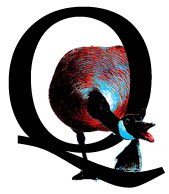The feelings that came from within me came from my own conflict with my understanding of myself, my identity and the disconnect I was having with this new embodiment. The disconnect with the role I played in the world. I did not feel sexy, confident or desirable. I did not feel like someone people could rely on.
Thinking of this now, I hear the words of Bonnie Klein booming inside of me, over and over again (Quoted from Susan Wendell’s From The Rejected Body, 1996) when she said:
“…I am no longer the image of strength, competence and independence that feminists, including myself, are so eager to project”.I was at a loss of what it was that I could offer, when it seemed as though I was in constant need. My body spoke silently to strangers and friends, my new embodiment asking: What is our potential relationship now – you, my disabled body and I? Am I still your political ally? Your friend? Your lover? Your teacher? Your curator? Your confidante? Your potential random pickup at a bar? You and my wheelchair and my swollen foot and my crutches and I – who are we to each other now? Who am I to you? Who am I to me?
One of the striking aspects was how physical inaccessibility created the spectacle.
When I would enter a space I would be looked at, but as I spent time in that space, like a museum or restaurant, I began to blend in - I began to belong. However in the moments of inaccessibility – when I was clinging to a fence trying to hop across a snow filled path, as I crawled up the stairs on my hands and knees, as the NYPD yelled and swore at my cab driver for taking up space while we loaded the chair in the back – my existence and my audacity for being out in the world became a performance. A show filled with pity; a spectacle of curiosity.
For just a few days, I embodied Rosemarie Garland Thomson’s visual rhetoric’s of the courageous, the suffering, the sentimental and the exotic.
The barriers made me feel defeated, while the gaze made me feel pathetic.
When we speak of increasing “representation” it is not just the meaningful and important images of “real” disability that we must socially see more of, but it is also navigating the fine line between being mindful of how (and who) we observe, while also not ignoring their reality.
On the street in real time - how do we witness each other’s experiences without objectifying them? How do we respect their privacy in public spaces? How do we see the injustice and the indignity people with disabilities at times endure, while at the same time seeing each other as equals – not as freaks or objects of pity?
PARTS 1, 3 & 4





2 comments:
Very interesting reflection, love to see how an experience that some might have considered simply a temporary burden to yourself became such an awesome learning experience (for ALL of us!)
G.
I have to agree here. Reading this can be a real eye opener for some people, to take that type of a burden and turn into a lesson many of us can learn is wonderful. Thanks for sharing such a great story! Feel free to visit me!
Post a Comment